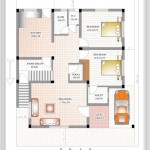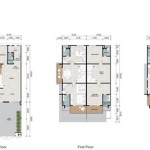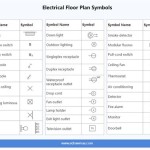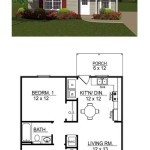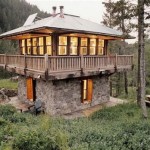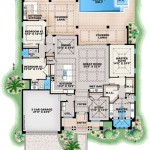Barred Owl House Plans
Barred owls, recognized by their distinct “who cooks for you? who cooks for you all?” call, are common residents of eastern and western North American forests. These raptors play a crucial role in maintaining healthy ecosystems by controlling rodent populations. Providing suitable nesting sites through the installation of barred owl houses can encourage their presence and contribute to local biodiversity. Understanding their nesting habits and preferences is crucial to successfully attracting these beneficial birds.
Barred owls are cavity nesters, meaning they prefer pre-existing hollows in large trees. Natural cavities, formed by decay or woodpeckers, provide shelter from the elements and protection from predators. However, suitable natural cavities can be scarce, particularly in younger forests or areas subject to logging. This scarcity can limit barred owl populations, making artificial nest boxes a valuable conservation tool.
Constructing a barred owl house requires careful consideration of several factors. Size is paramount. Barred owls are relatively large birds, requiring a larger box than smaller owl species like screech owls. A typical barred owl house should have interior dimensions of approximately 15-18 inches wide, 15-18 inches deep, and 24-36 inches high. The entrance hole should be approximately 6-8 inches in diameter and placed near the top of the box.
Material selection is also an important consideration for durability and insulation. Exterior-grade plywood, cedar, or cypress are all suitable options. Avoid using treated lumber as the chemicals used in the treatment process can be harmful to the owls. The interior of the box should be roughened or scored to provide grip for owlets as they grow and prepare to fledge.
Proper placement of the owl house is critical for attracting barred owls. Select a location in a mature forest with large trees. The box should be mounted on a sturdy tree trunk or limb, at a height of 15-20 feet above the ground. Ensure the entrance hole faces away from prevailing winds and is sheltered from direct sunlight and rain. Avoid placing the box in areas with heavy human activity.
Drainage is crucial for preventing moisture build-up within the box. Drill several small holes in the bottom of the box to allow for water drainage. Adding a layer of wood chips or shavings to the bottom of the box can further improve drainage and provide a soft substrate for nesting.
Maintenance of the owl house is essential for its long-term success. Annual inspections should be conducted after the nesting season, typically in late summer or early fall. Remove old nesting material, check for signs of damage or decay, and make any necessary repairs. Cleaning the box with a mild disinfectant solution can help prevent the spread of parasites or diseases.
Barred owls do not build their own nests, instead utilizing existing cavities or provided materials. Adding a layer of wood shavings or shredded bark to the bottom of the box can provide a suitable base for the owls to lay their eggs. Avoid adding hay or straw, which can retain moisture and promote mold growth.
When observing a barred owl house, maintaining a respectful distance is essential to avoid disturbing the birds. Excessive activity near the box can cause stress and lead to nest abandonment. Using binoculars or a spotting scope allows observation without encroaching on the owls' territory.
Predation is a natural concern for barred owls. While the height and location of the box offer some protection, considering predator guards can further enhance nest security. Metal flashing or baffles placed around the tree trunk below the box can deter climbing predators such as raccoons or snakes. Thorny branches placed around the base of the tree can also provide a natural barrier.
Monitoring the success of the owl house can provide valuable insights into local barred owl populations. Keep a record of any observed activity, including nesting behavior, the number of owlets fledged, and any signs of predation. This information can be shared with local wildlife organizations and contribute to broader conservation efforts.
Building and installing a barred owl house can be a rewarding experience, offering the opportunity to contribute to the conservation of these magnificent birds. By carefully considering the design, placement, and maintenance of the box, one can increase the likelihood of attracting barred owls and supporting their role in maintaining healthy forest ecosystems.

Barred Owl House 70birds Birdhouse Plans Index

Barred Owl Nest Box Plan Maryland S Wild Acres

Barred Owl Nest Box Plans 70birds Birdhouse Bird House Houses

Barred Owl Birdhouse Plans 70birds Index

Bird Houses Nesting Box Barred Owls House Plans Kits
649 Structures For Wildlife Implementation Requirements Barred Owl Nest Box Design Description The Is Distinguis

Barred Owl House Google Search Bird Plans Houses Diy

Owls Nc State Extension Publications
How To Build A Barred Owl House

Barred Owl Nest Box Plan Maryland S Wild Acres

